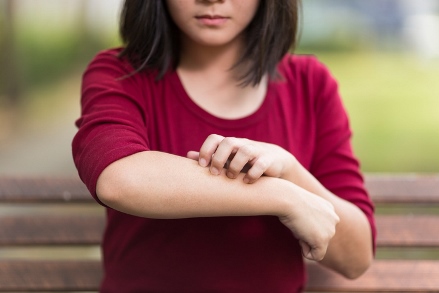As there is no blood test for eczema, the diagnosis is m ade based on characteristic clinical features, including a recurring rash associated with marked itching. A skin biopsy is occasionally done to confirm the diagnosis but is only required if the presentation is not typical and other causes of eczema need to be ruled out.
ade based on characteristic clinical features, including a recurring rash associated with marked itching. A skin biopsy is occasionally done to confirm the diagnosis but is only required if the presentation is not typical and other causes of eczema need to be ruled out.
The following criteria have been written by the American Academy of Dermatology to help doctors correctly identify children with atopic dermatitis:
Essential features
An individual must have the following features to be diagnosed with atopic dermatitis:
- Itchiness (pruritis)
- Eczema-like rash
- Typical “look and feel” of eczema
- Typical age-specific patterns of eczema
- Chronic or relapsing history
Important features
An individual may or may not have the following features. They strongly suggest the diagnosis of atopic dermatitis:
- Early age of onset
- Dry skin (xerosis)
- A history of atopic dermatitis, allergies/hay fever, and/or asthma (atopy)
- Personal and/or family history
- IgE reactivity
Associated features
An individual may or may not have the following features that are only sometimes seen in association with atopic dermatitis. As such, they simply help to support a possible diagnosis of atopic dermatitis:
- Pale facial skin (facial pallor)
- Skin blanches for an unusually long time (delayed blanch response)
- Skin develops a pale raised rash that then becomes red when the skin is stroked or scratched (white dermatographism)
- Bumpy skin on the upper arms, thighs, and face (keratosis pilaris)
- Increased number of lines on the palms and/or soles (hyperlinearity)
- Dry, scaly skin resembling “fish scale” (ichthyosis)
- Rashes or darkening of the skin around the eyes, mouth, or ears
- “Chicken skin” or “goosebump skin” (perifollicular accentuation)
- Thickening of the skin (lichenification)